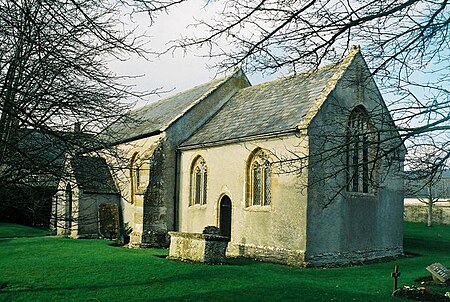St Catherine's Church, Fivehead

The Church of St Catherine in Swell Lane, Fivehead, Somerset, England dates from the 12th century and has been designated as a Grade I listed building.It has a three-bay nave and two bay chancel. The vane is supported by buttresses. The door in the south porch has a Norman, Romanesque chevron arch.The six bells were restored in 2007. The interior includes a Norman font and has a Jacobean pulpit from 1634.The church is adjacent to Swell Court Farmhouse which is also Grade I listed. In the churchyard are two chest tombs, one dated 1619, which are also listed buildings.The parish is within the benefice of Curry Rivel with Fivehead and Swell which is part of the Diocese of Bath and Wells.
Excerpt from the Wikipedia article St Catherine's Church, Fivehead (License: CC BY-SA 3.0, Authors, Images).St Catherine's Church, Fivehead
Higher Swell,
Geographical coordinates (GPS) Address Nearby Places Show on map
Geographical coordinates (GPS)
| Latitude | Longitude |
|---|---|
| N 51.008333333333 ° | E -2.9002777777778 ° |
Address
Higher Swell
TA3 6PZ
England, United Kingdom
Open on Google Maps







